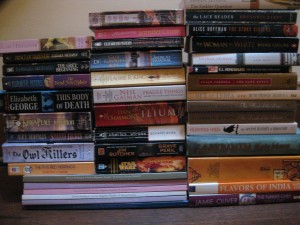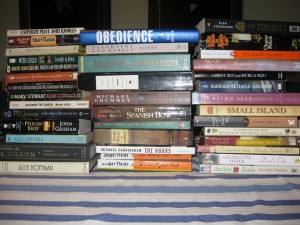In the spring of 1148, Eleanor of Aquitaine arrived with her husband, King Louis of France in the county of Antioch, after a horribly traumatic journey through Asia Minor (what we’d call Turkey) which ended with the loss of most of the crusader army they had brought with them. They were met by Raymond of Poitiers, Eleanor’s uncle on her father’s side. He had come to Antioch years before, hinting he’d wed the widowed countess, Alice, and instead, to her great chagrin, married her daughter, and claimed the county in her name.
The story told of Eleanor’s time in Antioch, that she had an illicit relationship with Raymond, is not one that tends to find favour with readers. It seems too gossipy and too, well, icky. Eleanor has entered the pantheon as a brave, strong, independent women at a time when they were rather thin on the ground, and it is just not a story that we want to believe about her.
So what do her contemporaries say? John of Salisbury raises the alarm bell in his Historia Pontificalis:
While they remained in Antioch to console, heal, and revive the survivors from the wreck of the army, the attentions paid by Count Raymond to Eleanor and his constant, indeed almost continuous conversation with her aroused the king’s suspicions.
He goes on to say that when the king decided to leave Antioch, the queen wished to stay and use her army to help the count, and Raymond was more than happy to have her remain, if the king would give his consent:
And when the king made haste to tear her away, she mentioned their kinship, saying it was not lawful for them to remain together as man and wife since they were related in the fourth and fifth degree.
In other words she raised the idea of divorce from the king, based on their consanguineity.
John tells us more:
There was one knight amongst the king’s secretaries, Thierry de Galeran, a eunuch whom the queen had always hated and mocked, but who was faithful and had the king’s ear like his father before him. He boldly persuaded the king not to suffer her to dally longer at Antioch, both because, “Guilt under kinship’s guise could lie concealed,” and because it would be a lasting shame to the kingdom of the Franks if in addition to the other disasters, it was reported that the king had been deserted by his wife or robbed of her.
Thierry’s words about guilt under kinship’s guise are meant to imply a sinful relationship between Eleanor and her uncle, and John is well aware of the irony of her using her distant relationship with the king to escape her marriage and stay with Raymond. The king did tear her away from Antioch against her will , and the two hated each other ever more. John recounts that they went in separate ships when they finally left the Holy Land, and that Pope Eugenius did a spot of marriage counselling when they arrived in Rome, pushing them to sleep in the same bed. John was in Rome at the time, so would have been in a good place to hear all the gossip first hand.
William of Tyre, speaking abut the same events, is more explicit:
The queen readily assented to Raymond’s design for she was a foolish woman. Her conduct before and after this time showed her to be far from circumspect. Contrary to her royal dignity, she disregarded her marriage vows and was unfaithful to her husband.
William, too, writes of Louis’s departure from Antioch and raises the spectre of s sneaky, night-time escape:
By the advice of his chief nobles, King Louis hastened his departure and secretly left Antioch with his people. Thus the splendid aspect of his affairs was completely changed, and the end was quite unlike the beginning. His coming had been attended with pomp and glory; but fortune is fickle, and his departure was ignominious
John and William both wrote their accounts some years after the events they describe, though both were alive during the events they describe. William would have been about eighteen when Louis and Eleanor were in the Holy Land, certainly old enough to hear the tales. There is also some evidence that is exactly contemporary that, at the very least, demonstrates the king and queen were having serious marriage troubles. Abbot Suger of St. Denis was one of those left in France to take care of the kingdom while Louis and Eleanor were off gallivanting in the Holy Land. He wrote the following in a letter to Louis, responding to one that is now lost:
Concerning the queen your wife, we venture to congratulate you, if we may, upon the extent to which you wait to express your anger, if there be anger, until with God’s will you return to your own kingdom and see to these matters and others.
Hmm, something was certainly up. Can we be sure, reading this evidence, that we know what it was? Was Eleanor unfaithful to her husband with her uncle? We still need to place this evidence in context. In my next post, I’ll do just that and give some reasons why she may be guilty as charged — and some why she may be innocent.



